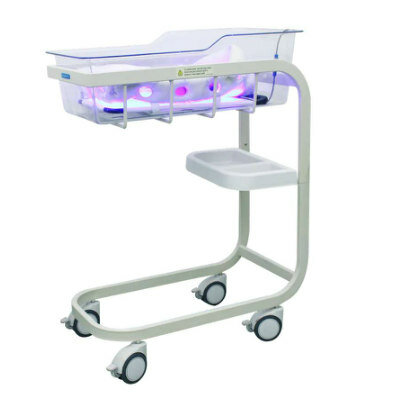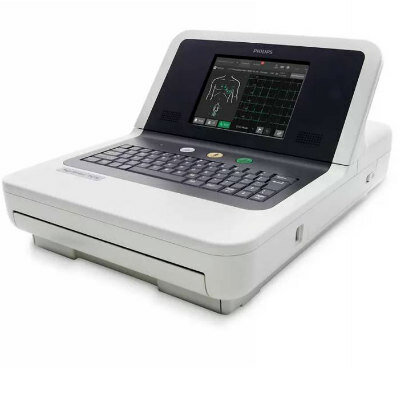Spinal Decompression System Treats Lumbar Back Pain
|
By HospiMedica International staff writers Posted on 26 Sep 2018 |

Image: A motorized traction system helps relieve back pains (Photo courtesy of Excite Medical).
A non-surgical motorized traction system provides a novel modality for the management of patients suffering from incapacitating low back pain and sciatica.
The Excite Medical (Tampa, FL, USA) DRX9000 system is designed to apply spinal decompressive forces to both compressive and degenerative injuries of the spine via motorized traction, in order to relieve the pain associated with herniated discs, degenerative disc disease, posterior facet syndrome, and radicular pain. The system provides accurately controlled logarithmic distraction tensions that relax and confuse paraspinal muscles, allowing decompression of the intervertebral spinal disc space.
The treatment computer constantly updates an amplifier controlling a servo-motor to immediately and safely apply forces as input by qualified healthcare personnel on the user interface. Load-cell feedback is utilized to further verify and adjust tensile forces, allowing for variations in patient posture and outside forces so that continuous and smooth tension is experienced by the patient. A built-in safety switch held by the patient allows him at any time and for any reason to quickly pause any tensile forces; the patient safety switch is monitored and executed by two redundant systems.
A free-floating lower body mattress allows the inter-discal segments of the lumbar spine to decompress at their own rate. As tension is cycled, the lower body can extend independent of the upper body, which is held in place via a textile restraining harness. The treatment bed and textile harness allow patients to experience complete relaxation, and require no conscious exertion on their part. This, in turn, helps encourage paraspinal muscle relaxation from both a physical and psychological standpoint, and is a key to spinal decompression.
“DRX treatment has proved to be a leading technology for the non-surgical and drug-free treatment of chronic lower back pain, like that due to herniated disc, bulging disc, and degenerative disc disease,” said Saleem Musallam, founder and president of Excite Medical. “In today’s health-conscious climate, patients suffering with back pain, neck pain, sciatica, and other disc related conditions are looking for a drug-free, pain-free, non-surgical treatment option.”
Non-surgical spinal decompression therapy involves stretching the spine, using a traction table or similar motorized device to create a negative intra-discal pressure that promotes retraction or repositioning of the herniated or bulging disc material. The resulting lower pressure in the disc space also causes an influx of healing nutrients and other substances.
Related Links:
Excite Medical
The Excite Medical (Tampa, FL, USA) DRX9000 system is designed to apply spinal decompressive forces to both compressive and degenerative injuries of the spine via motorized traction, in order to relieve the pain associated with herniated discs, degenerative disc disease, posterior facet syndrome, and radicular pain. The system provides accurately controlled logarithmic distraction tensions that relax and confuse paraspinal muscles, allowing decompression of the intervertebral spinal disc space.
The treatment computer constantly updates an amplifier controlling a servo-motor to immediately and safely apply forces as input by qualified healthcare personnel on the user interface. Load-cell feedback is utilized to further verify and adjust tensile forces, allowing for variations in patient posture and outside forces so that continuous and smooth tension is experienced by the patient. A built-in safety switch held by the patient allows him at any time and for any reason to quickly pause any tensile forces; the patient safety switch is monitored and executed by two redundant systems.
A free-floating lower body mattress allows the inter-discal segments of the lumbar spine to decompress at their own rate. As tension is cycled, the lower body can extend independent of the upper body, which is held in place via a textile restraining harness. The treatment bed and textile harness allow patients to experience complete relaxation, and require no conscious exertion on their part. This, in turn, helps encourage paraspinal muscle relaxation from both a physical and psychological standpoint, and is a key to spinal decompression.
“DRX treatment has proved to be a leading technology for the non-surgical and drug-free treatment of chronic lower back pain, like that due to herniated disc, bulging disc, and degenerative disc disease,” said Saleem Musallam, founder and president of Excite Medical. “In today’s health-conscious climate, patients suffering with back pain, neck pain, sciatica, and other disc related conditions are looking for a drug-free, pain-free, non-surgical treatment option.”
Non-surgical spinal decompression therapy involves stretching the spine, using a traction table or similar motorized device to create a negative intra-discal pressure that promotes retraction or repositioning of the herniated or bulging disc material. The resulting lower pressure in the disc space also causes an influx of healing nutrients and other substances.
Related Links:
Excite Medical
Latest Patient Care News
- Surgical Capacity Optimization Solution Helps Hospitals Boost OR Utilization

- Game-Changing Innovation in Surgical Instrument Sterilization Significantly Improves OR Throughput
- Next Gen ICU Bed to Help Address Complex Critical Care Needs
- Groundbreaking AI-Powered UV-C Disinfection Technology Redefines Infection Control Landscape
- Clean Hospitals Can Reduce Antibiotic Resistance, Save Lives
- Smart Hospital Beds Improve Accuracy of Medical Diagnosis
- New Fast Endoscope Drying System Improves Productivity and Traceability
- World’s First Automated Endoscope Cleaner Fights Antimicrobial Resistance
- Portable High-Capacity Digital Stretcher Scales Provide Precision Weighing for Patients in ER
- Portable Clinical Scale with Remote Indicator Allows for Flexible Patient Weighing Use
- Innovative and Highly Customizable Medical Carts Offer Unlimited Configuration Possibilities
- Biomolecular Wound Healing Film Adheres to Sensitive Tissue and Releases Active Ingredients
- Wearable Health Tech Could Measure Gases Released From Skin to Monitor Metabolic Diseases
- Wearable Cardioverter Defibrillator System Protects Patients at Risk of Sudden Cardiac Arrest
- World's First AI-Ready Infrasound Stethoscope Listens to Bodily Sounds Not Audible to Human Ear
- POC Diagnostic Platform Offers Handheld, Instrument-Free PCR Testing for STIs
Channels
Artificial Intelligence
view channel
AI-Powered Algorithm to Revolutionize Detection of Atrial Fibrillation
Atrial fibrillation (AFib), a condition characterized by an irregular and often rapid heart rate, is linked to increased risks of stroke and heart failure. This is because the irregular heartbeat in AFib... Read more
AI Diagnostic Tool Accurately Detects Valvular Disorders Often Missed by Doctors
Doctors generally use stethoscopes to listen for the characteristic lub-dub sounds made by heart valves opening and closing. They also listen for less prominent sounds that indicate problems with these valves.... Read moreCritical Care
view channel
Deep-Learning Model Predicts Arrhythmia 30 Minutes before Onset
Atrial fibrillation, the most common type of cardiac arrhythmia worldwide, affected approximately 59 million people in 2019. Characterized by an irregular and often rapid heart rate, atrial fibrillation... Read more
Breakthrough Technology Combines Detection and Treatment of Nerve-Related Disorders in Single Procedure
The peripheral nervous system (PNS) serves as the communication network that links the brain and spinal cord to every other part of the body. It consists of two parts: the somatic nervous system, which... Read moreSurgical Techniques
view channel
Hydrogel-Based Miniaturized Electric Generators to Power Biomedical Devices
The development of engineered devices that can harvest and convert the mechanical motion of the human body into electricity is essential for powering bioelectronic devices. This mechanoelectrical energy... Read moreWearable Technology Monitors and Analyzes Surgeons' Posture during Long Surgical Procedures
The physical strain associated with the static postures maintained by neurosurgeons during long operations can lead to fatigue and musculoskeletal problems. An objective assessment of surgical ergonomics... Read more.jpg)
Custom 3D-Printed Orthopedic Implants Transform Joint Replacement Surgery
The evolving field of 3D printing is revolutionizing orthopedics, especially for individuals requiring joint replacement surgeries where traditional implants fail to provide a solution. Although most people... Read more
Cutting-Edge Imaging Platform Detects Residual Breast Cancer Missed During Lumpectomy Surgery
Breast cancer is becoming increasingly common, with statistics indicating that 1 in 8 women will develop the disease in their lifetime. Lumpectomy remains the predominant surgical intervention for treating... Read moreHealth IT
view channel
Machine Learning Model Improves Mortality Risk Prediction for Cardiac Surgery Patients
Machine learning algorithms have been deployed to create predictive models in various medical fields, with some demonstrating improved outcomes compared to their standard-of-care counterparts.... Read more
Strategic Collaboration to Develop and Integrate Generative AI into Healthcare
Top industry experts have underscored the immediate requirement for healthcare systems and hospitals to respond to severe cost and margin pressures. Close to half of U.S. hospitals ended 2022 in the red... Read more
AI-Enabled Operating Rooms Solution Helps Hospitals Maximize Utilization and Unlock Capacity
For healthcare organizations, optimizing operating room (OR) utilization during prime time hours is a complex challenge. Surgeons and clinics face difficulties in finding available slots for booking cases,... Read more
AI Predicts Pancreatic Cancer Three Years before Diagnosis from Patients’ Medical Records
Screening for common cancers like breast, cervix, and prostate cancer relies on relatively simple and highly effective techniques, such as mammograms, Pap smears, and blood tests. These methods have revolutionized... Read morePoint of Care
view channel
Critical Bleeding Management System to Help Hospitals Further Standardize Viscoelastic Testing
Surgical procedures are often accompanied by significant blood loss and the subsequent high likelihood of the need for allogeneic blood transfusions. These transfusions, while critical, are linked to various... Read more
Point of Care HIV Test Enables Early Infection Diagnosis for Infants
Early diagnosis and initiation of treatment are crucial for the survival of infants infected with HIV (human immunodeficiency virus). Without treatment, approximately 50% of infants who acquire HIV during... Read more
Whole Blood Rapid Test Aids Assessment of Concussion at Patient's Bedside
In the United States annually, approximately five million individuals seek emergency department care for traumatic brain injuries (TBIs), yet over half of those suspecting a concussion may never get it checked.... Read more
New Generation Glucose Hospital Meter System Ensures Accurate, Interference-Free and Safe Use
A new generation glucose hospital meter system now comes with several features that make hospital glucose testing easier and more secure while continuing to offer accuracy, freedom from interference, and... Read moreBusiness
view channel
Johnson & Johnson Acquires Cardiovascular Medical Device Company Shockwave Medical
Johnson & Johnson (New Brunswick, N.J., USA) and Shockwave Medical (Santa Clara, CA, USA) have entered into a definitive agreement under which Johnson & Johnson will acquire all of Shockwave’s... Read more
















